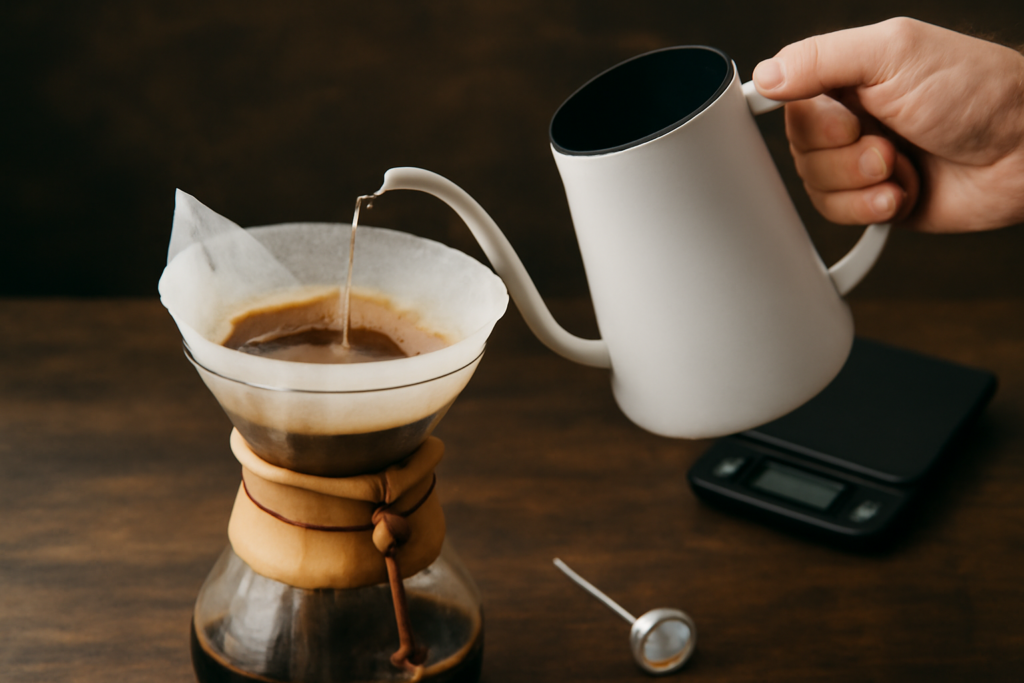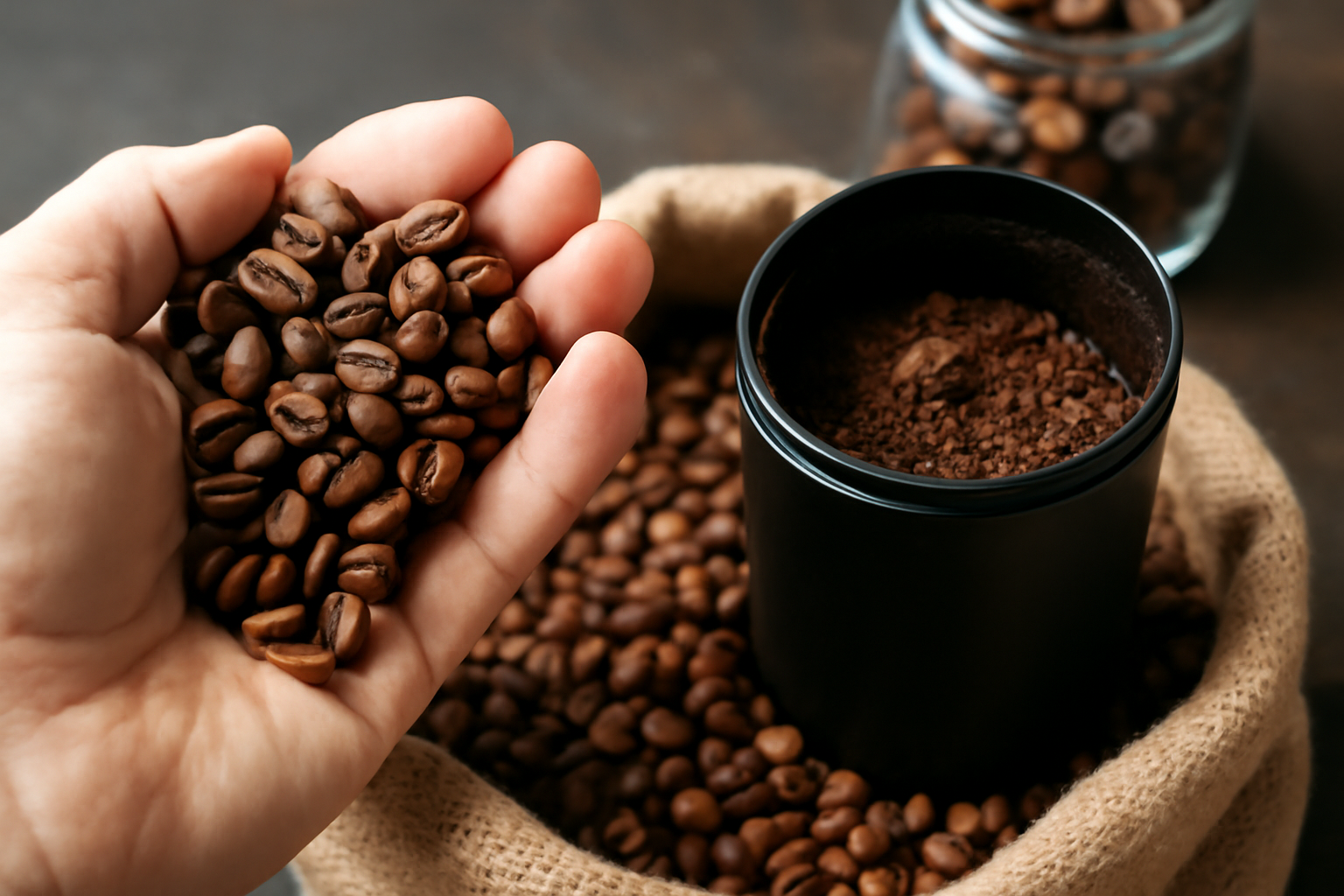Brewing coffee at home can be both deeply satisfying and incredibly frustrating. One day, you make a cup that’s smooth, flavorful, and perfectly balanced. The next day — same beans, same method — it tastes bitter, weak, or just wrong. What happened?
As a home barista, it’s normal to face inconsistencies in your coffee journey. But most issues can be traced back to a few common brewing mistakes. Once you learn to identify and avoid them, your coffee quality and consistency will improve dramatically.
This guide will walk you through the most frequent mistakes people make when brewing coffee — whether using a French Press, AeroPress, pour-over, or espresso — and how to fix them with simple adjustments.
1. Using Stale Coffee Beans
The most common (and most overlooked) mistake is using coffee that’s too old.
Why It’s a Problem:
After roasting, coffee begins to lose its flavor and aroma. Oxygen, light, heat, and moisture degrade the quality of the beans. Pre-ground coffee stales even faster.
How to Fix It:
- Always use freshly roasted coffee beans — ideally within 2 to 4 weeks of the roast date.
- Buy whole beans, not pre-ground.
- Store them in an airtight, opaque container, away from light, heat, and moisture.
- Avoid freezing unless absolutely necessary, and never store in the fridge.
Fresh beans are the foundation of great coffee. Don’t compromise here.
2. Incorrect Grind Size
Grind size is one of the most important variables in coffee brewing. A mismatch between grind and method leads to poor extraction — meaning either too much or too little of the coffee’s flavor ends up in your cup.
Signs of Incorrect Grind:
- Bitter, harsh coffee = too fine
- Sour, weak coffee = too coarse
- Uneven taste or over/under-extracted notes in the same cup = inconsistent grind
How to Fix It:
- Use a burr grinder, not a blade grinder.
- Match the grind to the method:
- French Press = coarse
- Pour-over (V60, Chemex) = medium to medium-fine
- AeroPress = fine to medium
- Espresso = fine
- Cold brew = extra coarse
- Adjust based on taste: finer = stronger, coarser = lighter
Test different grind settings and keep notes. This one change alone can transform your coffee.

3. Using the Wrong Water Temperature
Water that’s too hot will burn your coffee. Too cold, and the flavors won’t extract fully. Both lead to unbalanced cups.
Ideal Water Temperature:
90°C to 96°C (195°F to 205°F)
How to Fix It:
- Use a thermometer, or let boiling water rest for 30 to 60 seconds before pouring.
- Avoid using water straight from the kettle at full boil (100°C).
- Consider an electric kettle with temperature control for consistency.
Bonus: use filtered water. Tap water with too much chlorine or minerals can affect flavor.
4. Poor Coffee-to-Water Ratio
This is one of the easiest brewing mistakes to make. Using too much coffee makes your brew overpowering and bitter. Too little, and it’s watery and flavorless.
How to Fix It:
Use a digital scale and follow a ratio guide. A good starting point for most methods:
- 1:15 to 1:17 coffee-to-water ratio
- Example: 20g of coffee to 300g of water
- For espresso: use a 1:2 ratio
- Example: 18g in → 36g out
Adjust slightly based on taste preferences, but always measure. Eyeballing it leads to inconsistency.
5. Not Blooming the Coffee
When using pour-over or French Press, many people skip the blooming step — the initial wetting of the grounds to release gas.
Why It Matters:
Fresh coffee releases carbon dioxide (CO₂) when water first hits the grounds. If you skip blooming, trapped gas pushes water away and causes uneven extraction.
How to Bloom:
- Pour a small amount of hot water (twice the weight of the coffee dose)
- Let it sit for 30 to 45 seconds
- Then continue your pour in slow, circular motions
This step unlocks aroma and flavor — and prevents “channeling” in your brew.
6. Pouring Too Fast or Too Slow
Especially in manual methods like V60 or Chemex, your pour rate affects extraction.
Too fast = under-extracted
Too slow = over-extracted
How to Fix It:
- Use a gooseneck kettle for controlled pouring
- Pour in a steady, circular motion, starting in the center and moving outward
- Don’t flood the coffee or pour unevenly
- Aim for a total brew time of 2.5 to 4 minutes for pour-over
Watch the bloom, flow rate, and how quickly water drains — they’re all clues.
7. Letting Coffee Sit Too Long Before Drinking
Even the best cup turns bitter if left too long. As coffee cools, acids and oils oxidize and change flavor.
How to Fix It:
- Drink your coffee within 15 to 30 minutes of brewing
- Avoid reheating (especially in the microwave)
- If storing for later, consider cold brew or keep in a thermos
Fresh coffee is always best enjoyed hot and soon after preparation.
8. Not Cleaning Your Equipment
Coffee oils, residue, and old grinds build up over time and affect taste. A clean brewer is essential for clean flavor.
Signs of Dirty Equipment:
- Rancid or sour aftertaste
- Clogged filters or inconsistent flow
- Film or buildup in your brewer
How to Fix It:
- Rinse thoroughly after each brew
- Deep clean weekly with mild detergent or baking soda
- For espresso machines: backflush and descale regularly
- Don’t forget grinders — brush out old grounds and oils
Good coffee is clean coffee.
9. Overcomplicating Too Early
Many beginners try to master espresso, latte art, and multiple brew methods at once — and end up overwhelmed.
How to Fix It:
- Start with one method (e.g., French Press or AeroPress)
- Learn the basics: grind size, water temp, ratio
- Practice one variable at a time
- Build confidence, then move to more complex techniques
Progress is faster and more enjoyable when you go step by step.
10. Not Paying Attention to Taste
This might sound obvious, but many people focus so much on technique that they forget to actually taste their coffee with intention.
How to Fix It:
- Sip slowly and reflect: What do I taste? What do I like?
- Try side-by-side tastings of different grinds, beans, or ratios
- Keep a journal of your experiments and results
- Let your palate guide your learning
The best baristas develop intuition through mindful tasting — not just memorization.
Bonus Mistake: Relying on Expensive Equipment
It’s easy to think better coffee means buying the most expensive gear — but skill and understanding matter more.
How to Fix It:
- Focus on technique, not price
- Master the tools you already have
- Upgrade only when you’ve outgrown your current setup
A great cup is possible with a simple grinder, a kettle, and a pour-over or French Press — if you use them correctly.
Final Thoughts
Mistakes are part of the process. Every great home barista has brewed bitter coffee, forgotten to bloom, or used the wrong grind. The key is to learn, adjust, and enjoy the journey.
By avoiding the most common mistakes — stale beans, wrong grind, poor ratios, incorrect temperature, and lack of cleanliness — you’ll unlock consistently better coffee, more confidence, and deeper appreciation for every cup.
So the next time your coffee tastes off, don’t toss the beans or blame the gear. Pause, assess, and make one small change. Brewing coffee is a craft — and every mistake is just another step toward mastery.

I’m an economist with 15 years of experience in strategic planning and a lifelong passion for wellness and natural living. As a self-learner, I created Herbalife Balance to share insights on healthy eating, mindful habits, and an active lifestyle. Tennis enthusiast and nature lover, I believe in balance as a path to well-being. Through this blog, I help others live healthier, more conscious lives.

